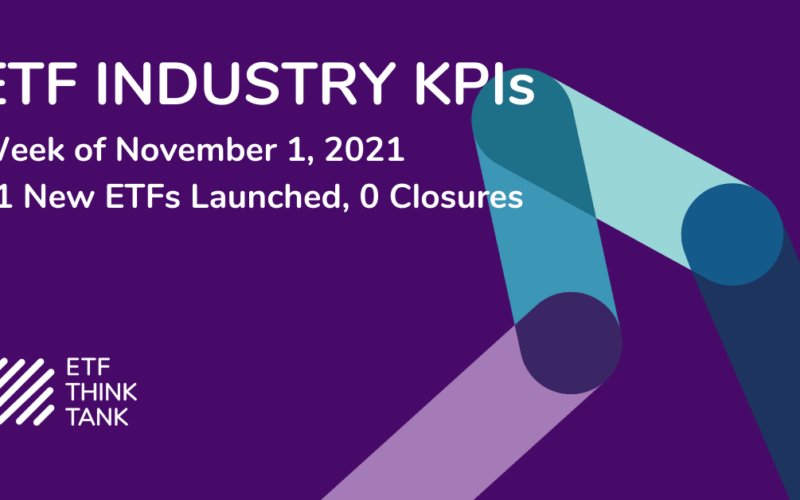Financial advisors face a number of challenges today, including how to best serve existing clients, how to grow their advisory businesses, and how to present themselves to the public. Mastering the public relations game can make all the difference in building a successful business. The ETF Think Tank discussed this and more with Chris Sullivan, the President of MacMillan Communication, a public relations firm specializing in the financial services space.
Sullivan says that for financial advisors, it’s all about telling a story – who you are, what you do, how you can be helpful – and if you don’t tell that story well, you’re going to be dead. Being able to deliver that message can take a lot of work and practice, but media training can be very helpful in terms of honing a message and paring it down to be more focused. Many advisors, unfortunately, don’t realize that they need this.
The first step advisors should take is figuring out what their story is because not every story will sell. When Sullivan takes a client, he drills into the story first and how it is told. Personality matters and being genuine is incredibly important. When developing relationships with media outlets, they shouldn’t be overly complicated, or they won’t resonate. Not all relationships will be mutually beneficial, and advisors need to understand who they should try to get in front of. If you can build a relationship with a media person that has more engagement and a more balanced discussion, there’s a better chance that you’ll be on top of the reporter’s mind when a sound bite is needed.
Sullivan, however, cautions against expecting too much from the media. At a basic level, he finds that a good PR strategy can help activate your current client base, but it may not help as much in attracting new clients. Most financial advisors don’t necessarily need to engage with a PR firm and may get better results working with their own in-house marketing. There is value if you happen to have a regional or even national presence but staying local and pushing on that front may work best.
Along the same lines, it’s important to understand what to expect from the media. Keep in mind that they have their own agenda as well. In terms of how to think of reporters, they’re not a mouthpiece for your business and they’re not there to plug your business. It’s OK to be friendly, but don’t assume that you are friends. Relationships can be beneficial, for example, if a reporter comes to you early on for information or if you’re able to provide a heads-up or background information to them, but you need to be careful.
Among other takeaways:
- Sullivan acknowledges that it’s extreme viewpoints, not necessarily interesting ones, that get the most attention. There is a search for truth, but the financial media can be an animal. He doesn’t put his clients up for that type of segment because there’s little to no value in it.
- In a world dominated by social media and online outlets, legacy media still matters. Places, such as Barron’s or Forbes, still have brand value, but they need to evolve with the changing environment. They want to be journalists, but they’re not operating in the traditional journalist environment. Substack, for example, is doing a great job of attracting writers, but working with long-standing media outlets is still beneficial.
- The next big financial media outlet may be TikTok. There will likely be an eventual evolution to this platform and advisors should be thinking about it now. This may ultimately be the best way to reach the younger, meme stock crowd because they’re not going to the Wall Street Journal or CNBC. On a platform that emphasizes fun, it can be difficult to figure out the best way to approach it.
- The press will continue to be around for the next 5-10 years and beyond, but the landscape may look different. Business and financial journalism is thriving, but small, local media may be in trouble.
This week our guest will be Lance Roberts, joining us to discuss a commonsense approach to investing. Sign up here.
Disclosure
All investments involve risk, including possible loss of principal.
The information provided here is for financial professionals only and should not be considered an individualized recommendation or personalized investment advice. The investment strategies mentioned here may not be suitable for everyone. Each investor needs to review an investment strategy for his or her own particular situation before making any investment decision.
All expressions of opinion are subject to change without notice in reaction to shifting market conditions. Data contained herein from third party providers is obtained from what are considered reliable sources. However, its accuracy, completeness or reliability cannot be guaranteed.
Examples provided are for illustrative purposes only and not intended to be reflective of results you can expect to achieve.
The value of investments and the income from them can go down as well as up and investors may not get back the amounts originally invested, and can be affected by changes in interest rates, in exchange rates, general market conditions, political, social and economic developments and other variable factors. Investment involves risks including but not limited to, possible delays in payments and loss of income or capital. Neither Toroso nor any of its affiliates guarantees any rate of return or the return of capital invested. This commentary material is available for informational purposes only and nothing herein constitutes an offer to sell or a solicitation of an offer to buy any security and nothing herein should be construed as such. All investment strategies and investments involve risk of loss, including the possible loss of all amounts invested, and nothing herein should be construed as a guarantee of any specific outcome or profit. While we have gathered the information presented herein from sources that we believe to be reliable, we cannot guarantee the accuracy or completeness of the information presented and the information presented should not be relied upon as such. Any opinions expressed herein are our opinions and are current only as of the date of distribution, and are subject to change without notice. We disclaim any obligation to provide revised opinions in the event of changed circumstances.
The information in this material is confidential and proprietary and may not be used other than by the intended user. Neither Toroso or its affiliates or any of their officers or employees of Toroso accepts any liability whatsoever for any loss arising from any use of this material or its contents. This material may not be reproduced, distributed or published without prior written permission from Toroso. Distribution of this material may be restricted in certain jurisdictions. Any persons coming into possession of this material should seek advice for details of and observe such restrictions (if any).












